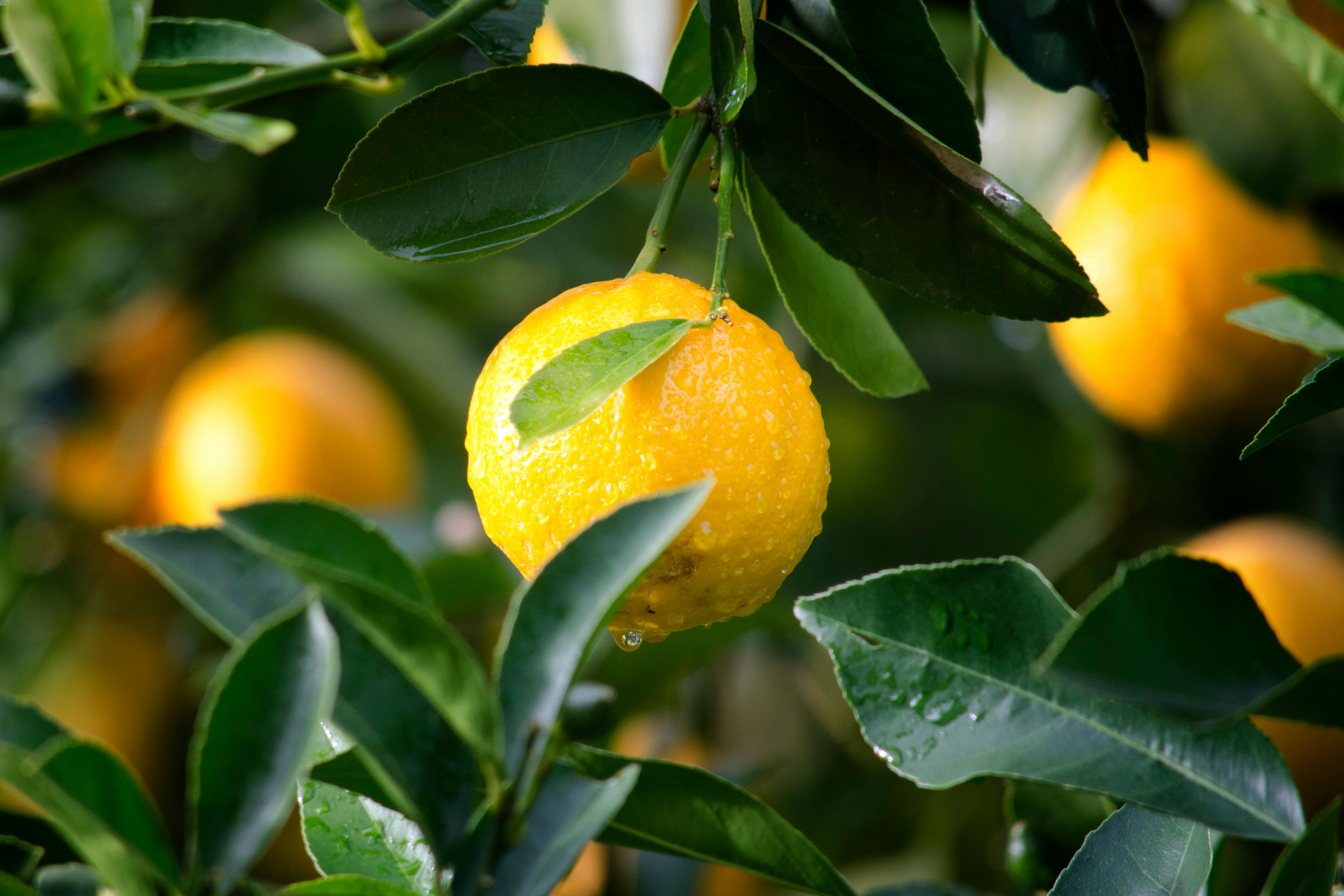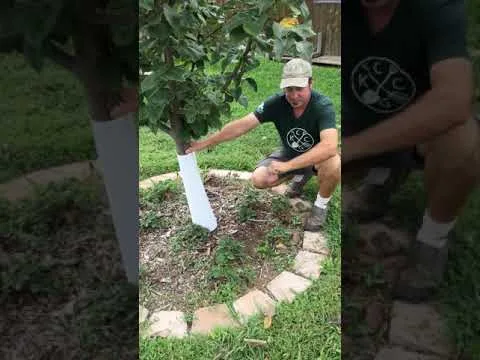Watering your fruit trees in the summer is essential for helping them to thrive. The amount of water needed will depend on a variety of factors including soil type, tree size, and climate. Knowing how often to water your fruit trees in the summer is key to ensuring they receive the right amount of moisture and nutrients.In the summer months, fruit trees should be watered approximately once a week. The amount of water should be based on the size of the tree, soil type, and weather. For example, during hot and dry periods, trees may need to be watered more frequently. Also, sandy soils require more frequent watering than clay soils. In general, it is best to give the tree a deep soaking that will reach down to its roots.
Factors Affecting Fruit Tree Watering Requirements In Summer
Fruit trees require regular watering to ensure they are able to grow and produce a healthy crop of fruit. In summer, there are several factors that can affect the amount of water a fruit tree needs – from the type of soil it is planted in, to the climate and weather conditions.
The type of soil is an important factor when considering how much water a fruit tree needs. Sandy soils tend to dry out quickly, so more frequent watering may be necessary in the warmer months. Clay soils retain water for longer periods, so may not need to be watered as often.
Climate and weather conditions can also play a role in determining how much water a fruit tree needs. Areas with high temperatures and low humidity will require more frequent watering than cooler climates with higher humidity levels. Rainfall is also an important factor; if it has been particularly dry or if there has been no rainfall for several weeks, then additional watering will be necessary to ensure the fruit tree remains healthy.
The type of fruit tree will also have an impact on its watering requirements. Some types of trees require more water than others, and their root systems may dictate how much they need – some have shallow roots which are prone to drying out quickly, while others have deeper roots which can reach down into moisture-rich layers of soil.
Finally, the age and size of the fruit tree can affect its watering requirements; younger trees need more frequent watering than older ones, as their roots are not as well established and therefore cannot access moisture as easily. Similarly, larger trees need more water than smaller ones because they have more foliage that requires hydration.
By taking all these factors into consideration when deciding on how much water a fruit tree needs in summer, gardeners can ensure that their trees remain healthy and produce good yields of quality fruits all season long.
Optimal Watering Frequency For Fruit Trees In Hot Weather
Maintaining optimal watering frequency for fruit trees in hot weather is important for ensuring healthy growth and productive harvests. During hot weather, fruit trees need more water than in cooler months due to higher temperatures and increased evaporation. While it is important to provide adequate water for the tree, it is equally important to not over-water the tree as this can lead to root rot and other problems. The best way to determine the optimal watering frequency for fruit trees in hot weather is to consider the type of tree, soil type, climate, and other factors.
For most fruit trees in hot climates, a good rule of thumb is to water deeply once a week during dry spells. This means thoroughly soaking the tree’s root zone with enough water so that it penetrates 8-12 inches below the surface. If possible, use a soaker hose or drip irrigation system to ensure even distribution of water throughout the root zone. Depending on climate and soil conditions, additional watering may be necessary during periods of extreme heat or drought.
When irrigating fruit trees in hot climates, it is important to take into account local weather conditions and factors such as wind speed and humidity when determining how much water should be given. For example, high winds can cause rapid evaporation which means that more frequent watering may be necessary. Additionally, sandy soils will require more frequent irrigation than clay soils because they are less able to hold moisture over time.
It is also important to monitor your fruit trees closely during periods of extreme heat and drought and adjust your watering schedule accordingly. If you notice signs of stress such as wilting leaves or yellowing foliage then an additional deep soaking may be necessary. Conversely if your tree appears healthy then you can reduce your watering frequency slightly but still maintain adequate moisture levels in the root zone.
Overall, determining the optimal watering frequency for fruit trees in hot weather requires careful consideration of several factors such as climate conditions, soil type, wind speed, humidity levels and more. With proper care and monitoring you can ensure that your fruit trees will remain healthy during periods of extreme heat and drought so they can produce a bountiful harvest come harvest time!
Best Practice For Watering Fruit Trees During The Summer
Watering fruit trees during the summer can be a tricky endeavor. Knowing when and how much to water is essential for producing healthy crops. Here are some best practices for watering your fruit trees during the summer months:
First, water your trees early in the morning or late in the evening. Avoid watering during midday when temperatures are at their highest as this can cause evaporation of the water before it has had a chance to soak into the soil.
Second, use a slow and steady approach when watering your trees. A gentle stream that soaks into the ground is preferable to heavy downpours which can lead to runoff and water waste.
Third, use a soil moisture meter to check on how much moisture is in the soil before you begin watering. This will help you determine how much water your tree needs and prevent over-watering which can lead to root rot or other issues.
Finally, mulch around your tree’s trunk and then around its base. Mulch will help retain moisture in the soil and reduce evaporation due to hot weather conditions.
By following these best practices for watering your fruit trees during the summer, you can ensure that they get enough water without overwatering them and potentially causing damage to their roots or foliage.
Properly Watering Fruit Trees During Summer
Fruit trees need proper watering to ensure healthy growth during summer. Without adequate water, trees may suffer from drought stress, which can reduce fruit production and cause the tree to become weak and more vulnerable to diseases. To ensure your fruit trees are properly watered during summer, there are a few important tips to consider.
First, monitor the soil moisture content regularly. You can do this by sticking your finger into the soil around the tree roots and feeling for dampness. If you don’t feel any moisture, it’s time to water your tree. It’s best to do this in the morning or evening when temperatures are cooler and less water will evaporate.
Second, when watering your fruit trees, make sure you deliver enough water so that it reaches down deep into the root zone; this is typically about 6-8 inches deep. You should also aim to apply about 2-3 gallons of water per inch of trunk diameter per week (for example, a 4-inch diameter tree would need 8-12 gallons of water each week). Water slowly so that it has time to soak in rather than running off.
Third, consider utilizing mulch around the base of your fruit trees as this will help to conserve moisture by slowing down evaporation from the soil. You can use organic mulches such as wood chips or straw or even plastic sheeting if you prefer. The mulch should be applied in a layer that is 2-4 inches thick and kept several inches away from the trunk of the tree itself.
Finally, if possible, try to avoid overhead watering with sprinklers or hoses as this can lead to disease problems on leaves and fruits due to fungal growth from prolonged wetness and humidity levels in the air. Instead, focus on using drip irrigation systems or soaker hoses for watering your fruit trees during summer months as these deliver water directly at ground level where it is needed most by roots.
By following these tips for watering your fruit trees during summer months you can help ensure that they receive adequate hydration throughout hot weather which will promote healthy growth and larger yields of delicious fruits come harvest time!

How To Avoid Overwatering Fruit Trees In The Heat Of Summer
Fruit trees, like any other type of tree, need water to thrive. However, there is such a thing as too much water. During the hot summer months, it is important to be mindful of how much water your fruit trees are getting and take steps to make sure they are not being overwatered. Here are some tips on how to avoid overwatering fruit trees in the heat of summer:
1. Check the soil moisture level – Before irrigating your fruit tree, check the moisture level in the soil. If the top 3-4 inches of soil is still moist, then that means your tree does not need additional watering. A simple way to do this is to use a trowel and dig into the soil near the base of the tree; if it feels damp enough for you to form a ball with it, then that means it has enough moisture.
2. Water deeply – When you do irrigate your fruit trees during the summer months, make sure you are giving them deep watering sessions rather than frequent light ones. This will help encourage strong root growth and ensure that your tree has access to deep sources of water during times of drought or high temperatures.
3. Mulch around your fruit tree – Adding a layer of mulch around your fruit tree can help regulate moisture levels in the soil during hot summer days by preventing evaporation from occurring too quickly. When adding mulch, make sure that it does not come into contact with your tree’s trunk as this can lead to rot or pest infestations.
4. Monitor irrigation systems – If you have an automatic irrigation system in place for your fruit trees, make sure that you monitor it closely during times when temperatures start to soar. Make sure sprinklers are positioned correctly so that they are not over-watering certain areas and adjust watering times accordingly if needed.
By following these tips on how to avoid overwatering fruit trees in the heat of summer, you can ensure your trees stay healthy and continue producing delicious fruits throughout the year!
The Importance Of Regularly Watering Fruit Trees In Summer
Fruit trees are a great way to enjoy homegrown produce in the summer months. However, it’s important to remember that fruit trees require regular watering to stay healthy and productive. Without proper watering, fruit trees can suffer from wilting leaves, stunted growth, and reduced yields. By regularly watering your fruit trees during the hot summer months, you can ensure that your tree remains healthy and produces a good harvest of delicious fruit.
When watering your fruit tree during the summer, it is important to keep in mind that different types of fruit trees require different amounts of water. Generally speaking, citrus trees need more water than other types of fruit trees, while stone fruits like peaches and cherries require the least amount of water. It is also important to note that the amount of water you give your tree will depend on how much sunlight it gets and how well-drained its soil is.
It is also important to remember that although regular watering is essential for keeping your tree healthy during the summer months, it is also possible to overwater your tree if you are not careful. If you notice that your soil is becoming overly dry or soggy after a few days of heavy rain or irrigation, then it may be time to adjust your watering schedule accordingly. Additionally, when watering your tree in hot weather be sure not to over saturate its roots as this can cause root rot or other diseases.
In conclusion, it is essential to regularly water fruit trees during the summer months in order to keep them healthy and productive. Different types of fruit trees require different amounts of water so be sure to research the specific requirements for each type before beginning a watering routine for your tree. Finally, be careful not to overwater as this can lead to root rot or other diseases in the long run.
Frequency Of Watering Needed For Different Types Of Fruit Trees In Summer
Watering is an essential part of successful fruit tree cultivation. Depending on the type of fruit tree, the frequency of watering it requires during the summer months varies. Citrus trees, for example, need a lot more water than other types of fruit trees. They should be watered once or twice a week while in bloom and then again once or twice a week after fruit has set. Apples and pears, on the other hand, require less water in summer and should only need to be watered every two to three weeks.
Stone fruits such as peaches and plums need more frequent watering than apples and pears. They should be watered every one to two weeks during the summer months while they are in bloom and then again every one to two weeks after fruit has set. It is important to avoid over-watering these types of trees as this can lead to root rot and other diseases.
When it comes to berry bushes, such as raspberries and blueberries, they need more frequent watering than other types of fruit trees. They should be watered every five to seven days during the summer months while they are in bloom and then again every five to seven days after berries have set. Again, it is important not to over-water these types of plants as this can lead to root rot and other diseases.
In general, all fruit trees should be given a deep soaking once a month during summer months when there is no rainfall. This will help ensure that the root system stays healthy and productive throughout the growing season.

Conclusion
Fruit trees require a lot of water during the summer months to maintain healthy growth. Watering your fruit trees during this time is essential to ensure they reach their full potential and produce delicious fruit. A good rule of thumb is to water your fruit tree once a week, applying at least an inch of water each time. If you live in an area with hot weather, you may need to water more frequently. Additionally, if the soil is dry or sandy, check it more often and apply more water to ensure that your fruit tree gets the proper hydration it needs. Remember that if you forget to water your fruit tree, it can become stressed and have negative consequences for its health and production capacity.
Overall, watering your fruit trees during the summer months is essential for their health and productivity. By following these guidelines, you can ensure your fruit trees will be properly hydrated throughout the summer season.



